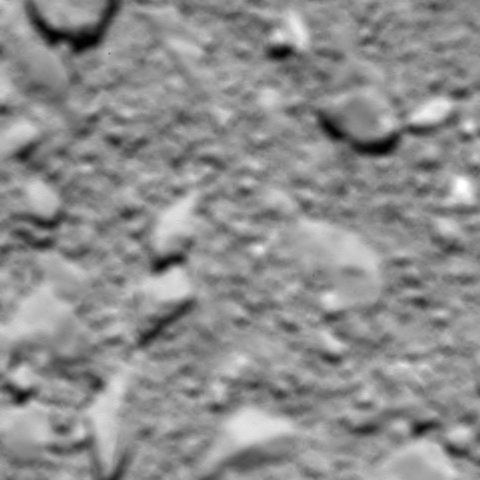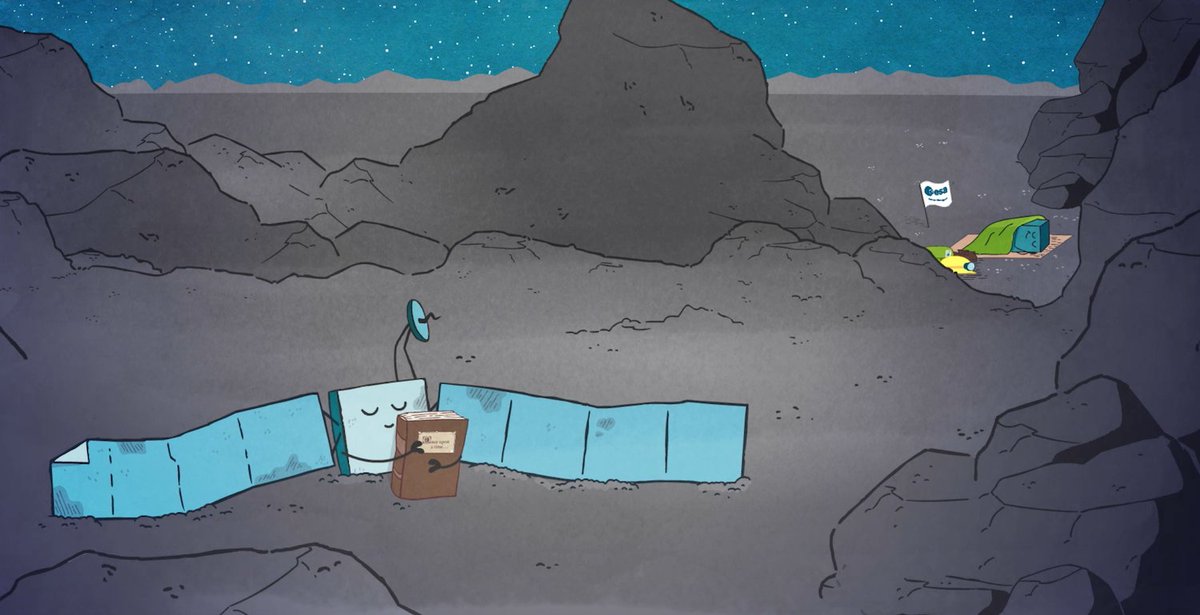ESA/Rosetta/MPS for OSIRIS Team
The Rosetta orbiter's final resting place
SLOW-MO SUICIDE
Despite the Philae lander's botched landing in 2014, the Rosetta mission's orbiter went on to accomplish great things, and this morning it gave the mission the soft landing originally intended for Philae. The orbiter touched down at a nice and easy pace of about two miles per hour.
From #67P with love: a last image, taken 51 metres before #CometLanding #MissionComplete http://ow.ly/lbmc304IADE
European Space Agency scientists knew they would have to pull the plug sometime. Rosetta's job was to monitor changes in Comet 67P/Churyumov-Gerasimenko as its orbit brought it closer to the sun, heating it up and causing gas and dust to poof off. Now the comet's path has brought it away from the sun and it's getting colder and darker. Rosetta's solar panels were no longer getting sufficient sunlight to keep the spacecraft warm and powered-up enough to function. Communications were also becoming more difficult.
Battered from comet dust and radiation, and running low on the fuel that would keep it in orbit, Rosetta's death dive provided a treasure trove of new data about the comet. The slow-motion plummet allowed Rosetta to sample gas and dust closer to the surface than ever before, and onboard cameras snapped pictures of the "goose bumps" lining the pits in the region of Rosetta's final resting place. These 3-foot-wide lumps are believed to be the remains of the gunk that clumped together to form the comet back in the early days of the solar system.
Rosetta crash-landed in a 430-foot-wide pit known as Deir el-Medina. It sent back its last photograph from a distance of about 167 feet.
Rosetta's signal was lost on impact.
To date, scientists have only sorted through about five percent of all the data from the ROSINA instrument, which measured the composition of the comet's surroundings. So although the mission is over, we'll still be learning about Rosetta's findings for months to come.


 ESA Rosetta Mission
ESA Rosetta Mission

Комментариев нет:
Отправить комментарий